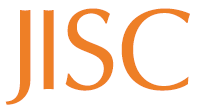Project background – Why ‘Teaching Administrators’ (TAs)?
By Clive Young, on 20 September 2011
 As the complexity of teaching and learning in Higher Education has grown we have seen the emergence of a cadre of academic managers and administrators, perhaps 30,000 individuals across the sector (Morgan 2011). While this trend is lamented by some as an increase in ‘pen pushers’ (e.g. Grimston 2011), there is also a growing recognition (e.g. Gordon and Whitchurch 2011) that especially in increasingly technologically ‘blended’ learning environments administrators and other support roles have a very positive contribution to make to the student experience.
As the complexity of teaching and learning in Higher Education has grown we have seen the emergence of a cadre of academic managers and administrators, perhaps 30,000 individuals across the sector (Morgan 2011). While this trend is lamented by some as an increase in ‘pen pushers’ (e.g. Grimston 2011), there is also a growing recognition (e.g. Gordon and Whitchurch 2011) that especially in increasingly technologically ‘blended’ learning environments administrators and other support roles have a very positive contribution to make to the student experience.
As a consequence in recent years a range of responsibilities have shifted from academic to support staff. In many departments Teaching Administrators (TAs) now have wide responsibilities for admissions, quality management, programme and course coordination and planning, VLE course management, student advice etc., and digital literacy underpins all these activities. TAs are also closely involved in the student feedback processes e.g. via questionnaires and Staff-Student Consultative Committee meetings and have a pivotal enabling role in supporting distance learning.
The growth of new roles is closely connected to the growing use of digital technologies. Like most universities, at UCL this is now policy: “the use of online technologies is an essential component of the way in which students access and engage with the curriculum at UCL” (Institutional Learning and Teaching Strategy 2010-2015). It is becoming clear that for this high-tech, high-touch vision of the modern university to be realised the digital literacies of support staff must be developed as a strategic asset and in developing this project we recognise the partnership between academic and non-academic staff required to achieve the highest standards in our academic mission.
The ambition of The Digital Department is therefore to professionalise the digital literacy of education administrators in order to enhance the teaching and learning environment. This is not simply the development of a specific group of staff; we see the digital literacies of students, academic colleagues and TAs being interconnected via the digital learning environment (see diagram top right).
References:
Grimston, J. (2011) Pen-pushers outnumber professors at university The Sunday Times, 10 April.
Morgan, J. (2011) A starring role beckons, Times Higher Education, 14 April.
Gordon, G. and Whitchurch, C. (2009) Academic and professional identities in higher education: the challenges of a diversifying workforce, London, Routledge, see also summary paper.
 Close
Close


 JISC
JISC 

